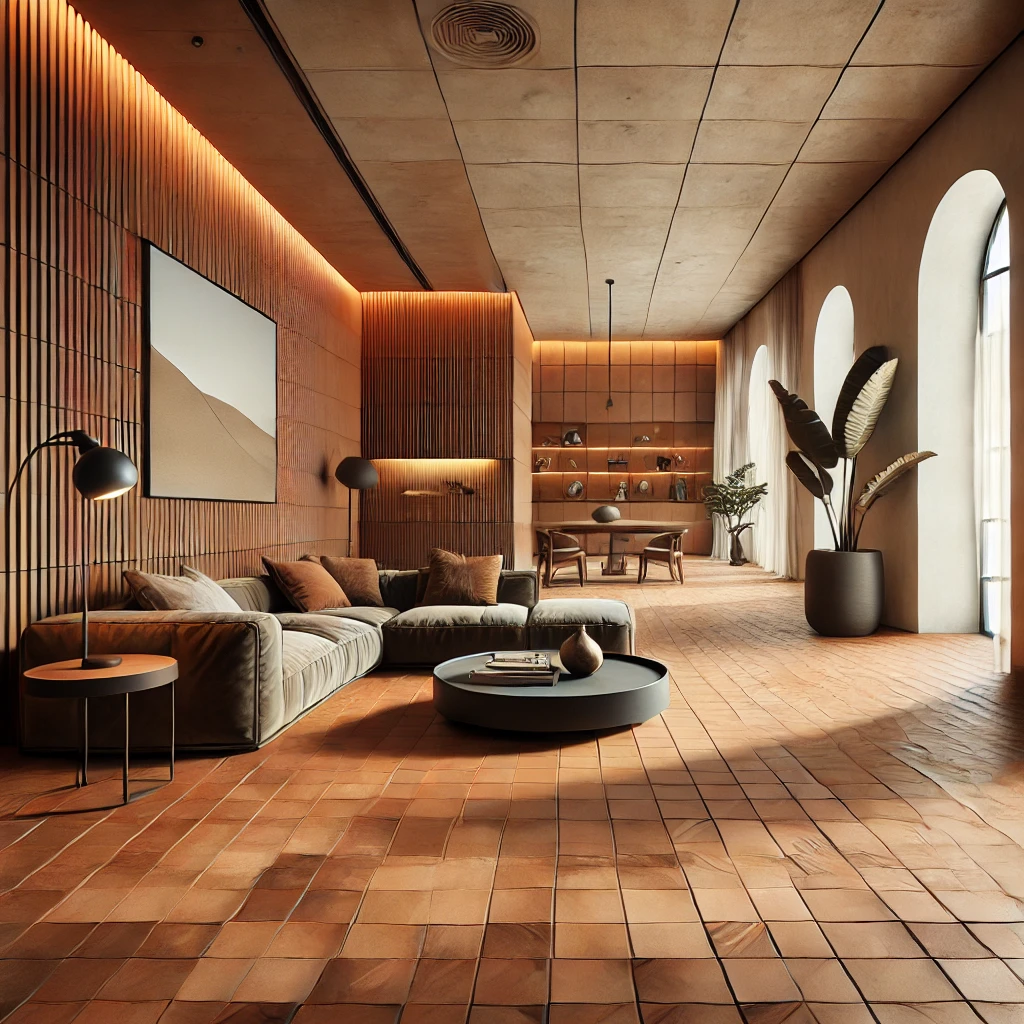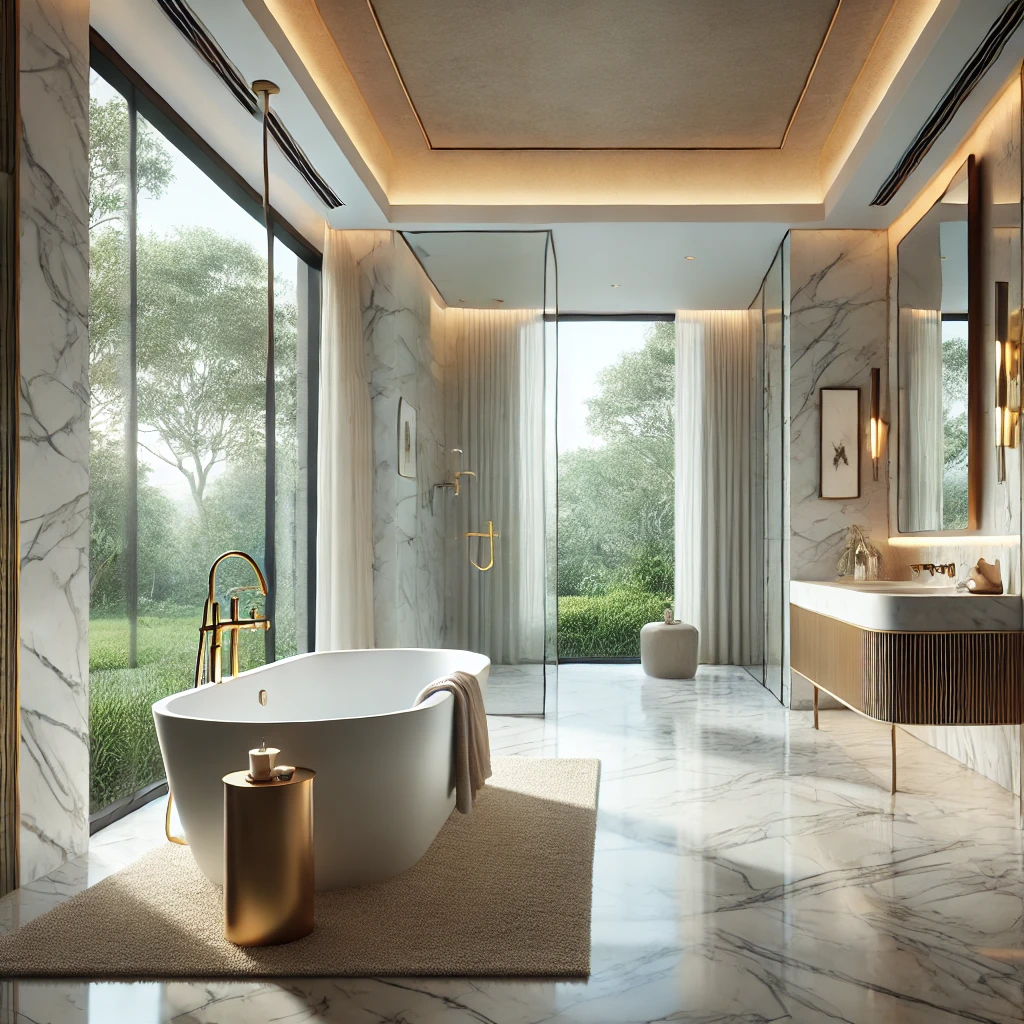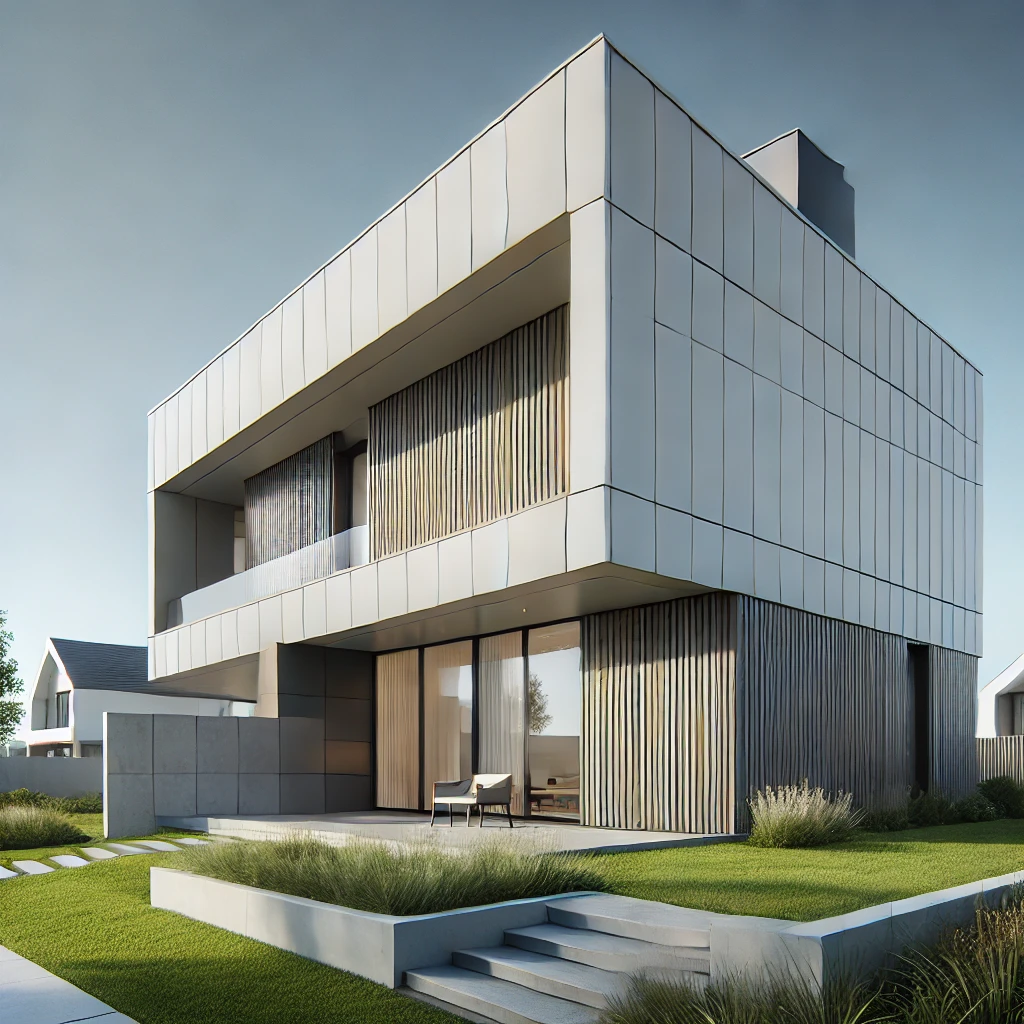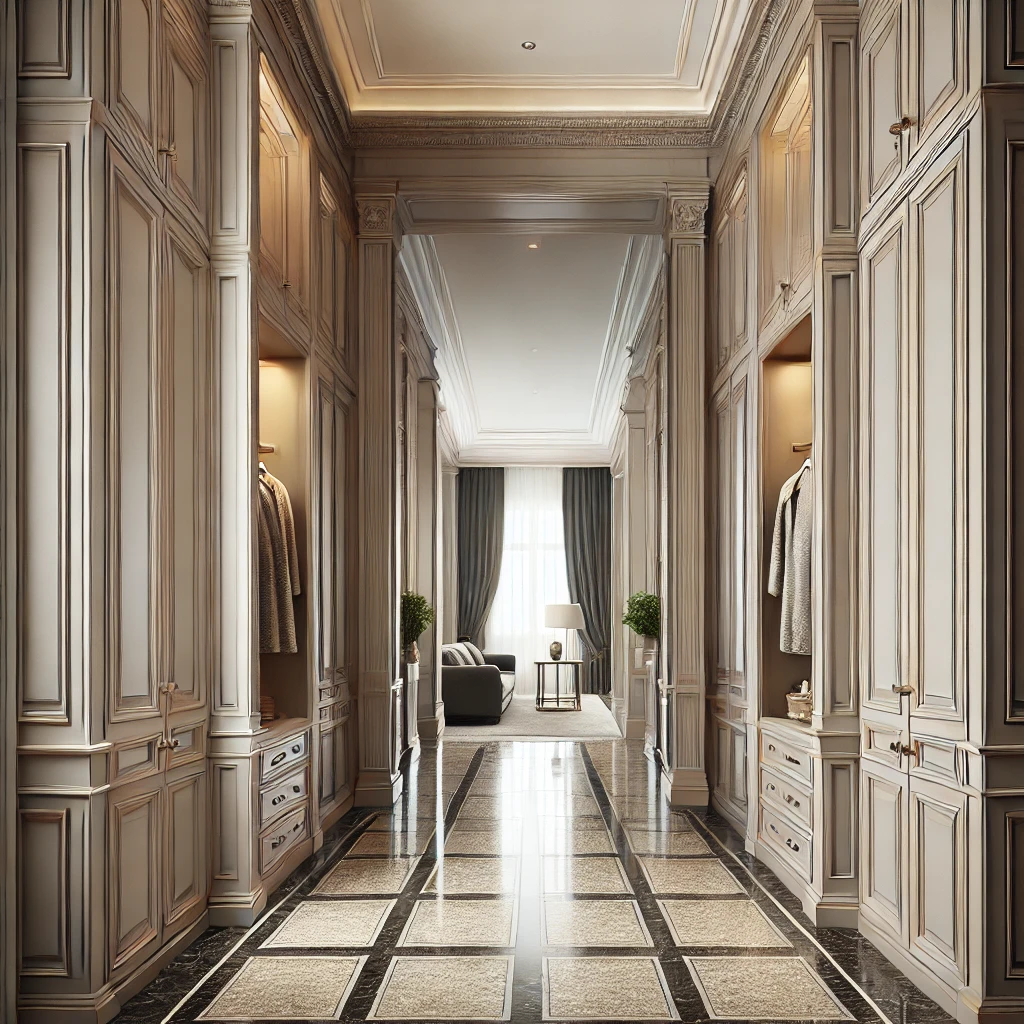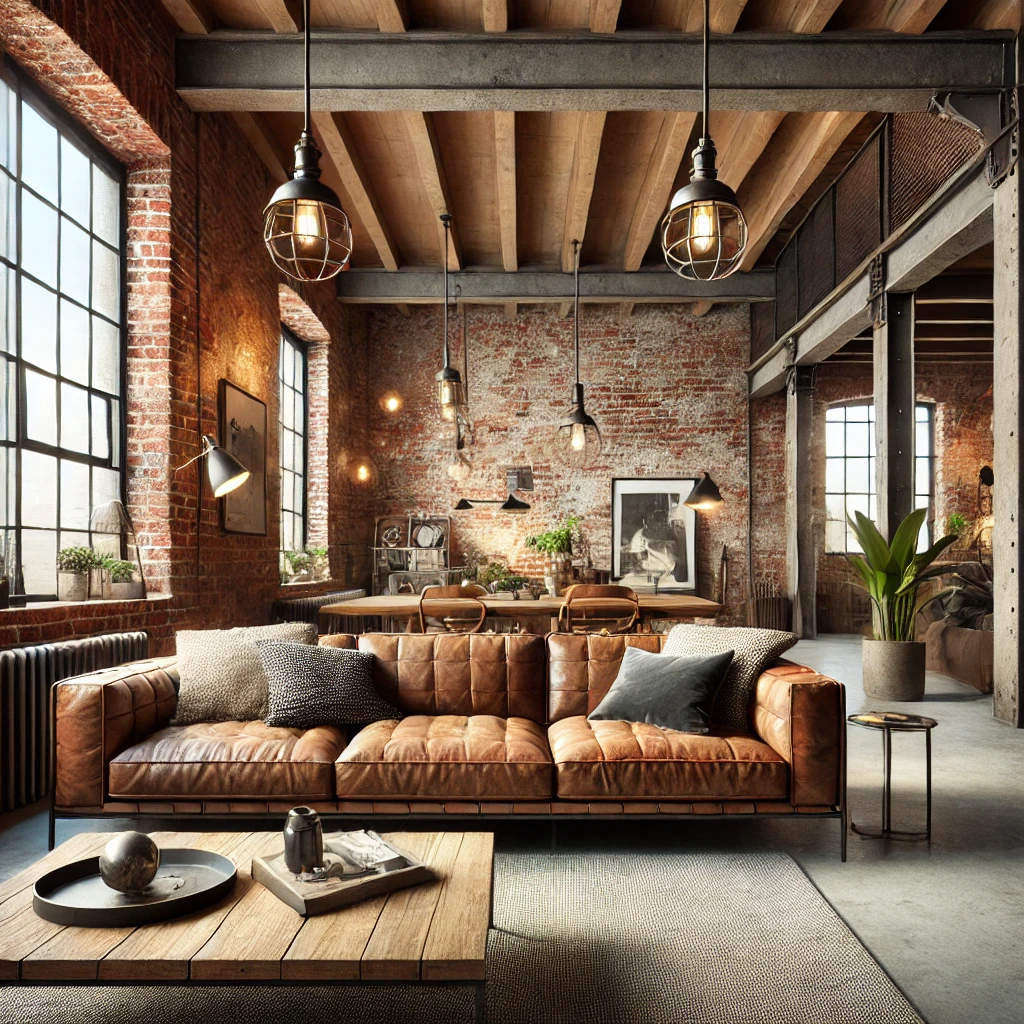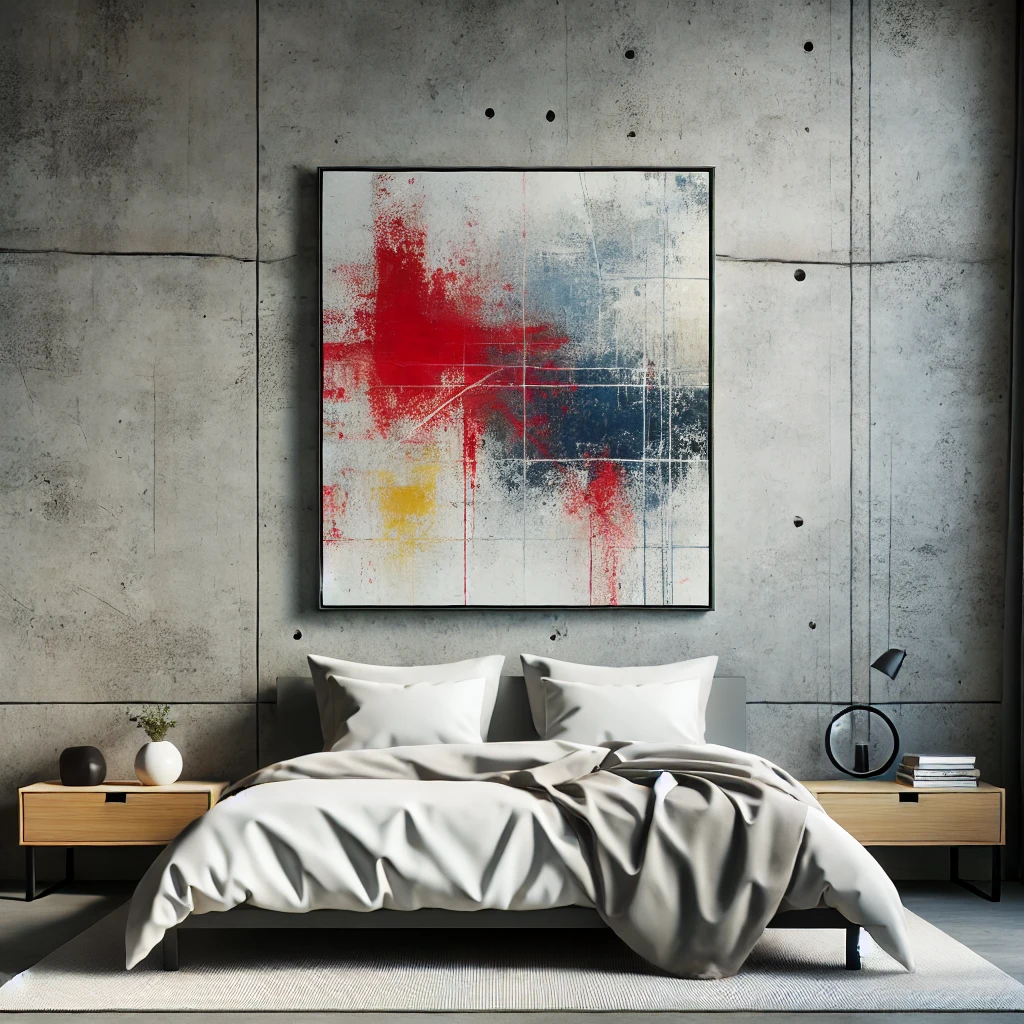Burnt Earth: Why We Love Terracotta Tiles and Recommend Them
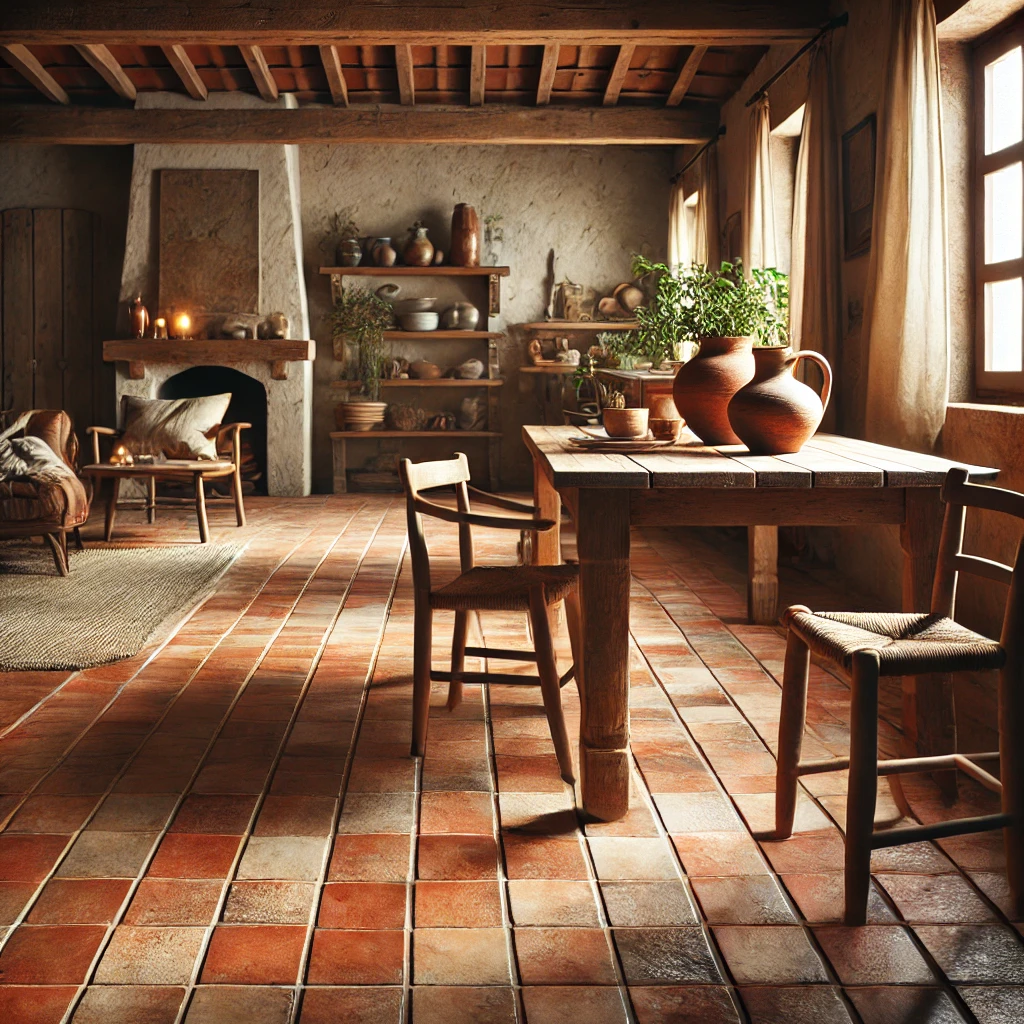
Terracotta, or terracotta tiles, despite their simplicity, are a highly effective decorative material that adds warmth and character to any space. The word “terra” means earth, a fundamental element from which all things are created and to which they return. As “terra” evolved into “terracotta” (literally translating from Italian as “baked earth”), it has become a versatile material used not only for floors but also for walls, roofs, and various household and decorative items. However, its primary role remains as a flooring tile, and that’s what we’ll focus on today.
Introducing Terracotta
Terracotta flooring is often defined as unglazed or glazed tiles (whether machine-made or handcrafted) made from fired clay. Historically, the “authentic” terracotta tile is handmade, unglazed, and typically thick—up to 2.5 cm. The traditional process involves low-temperature firing (up to 1000 degrees Celsius), which results in a porous material with a water absorption rate of 5-15% and lower strength compared to tiles fired at higher temperatures.
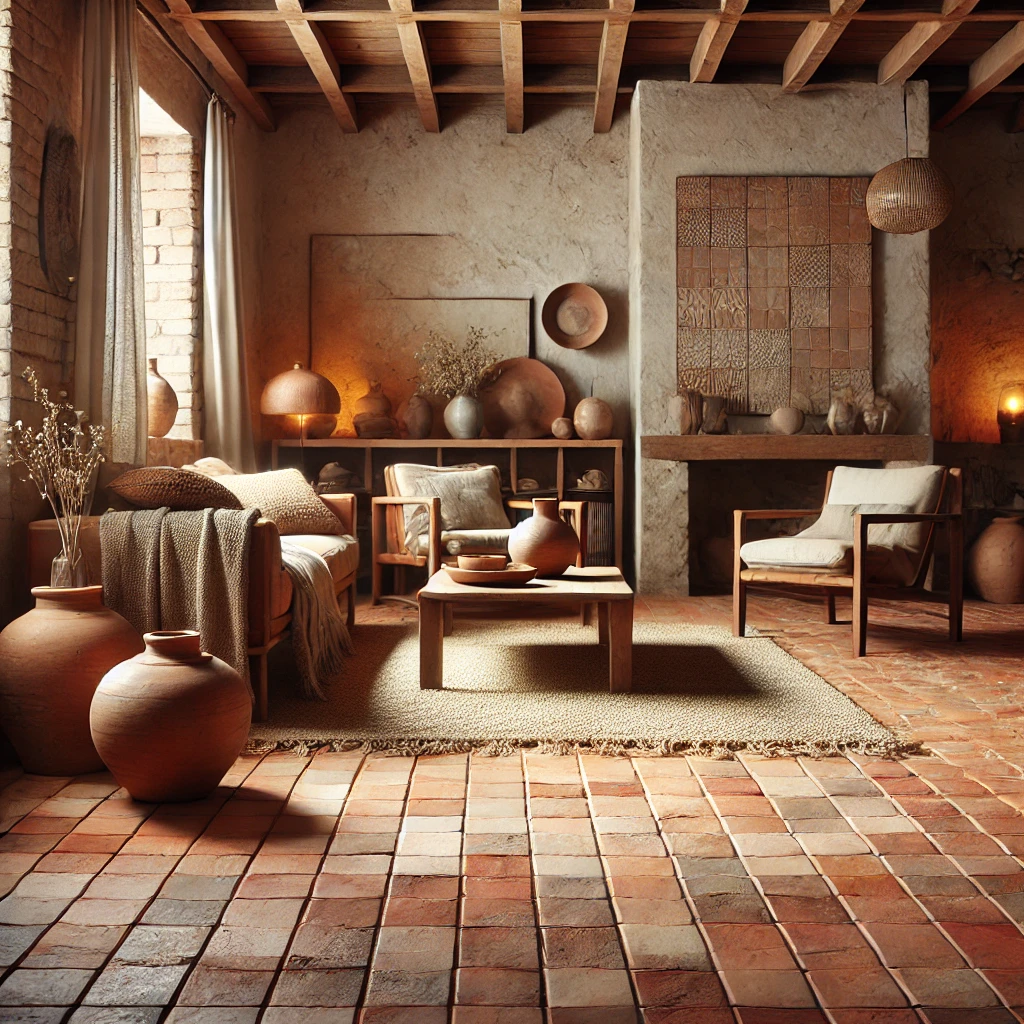
The Unique Characteristics of Terracotta
While terracotta’s porosity and medium strength might seem like drawbacks, these characteristics are not incompatible with its use in home interiors. In a heated house or apartment, frost resistance is not a crucial factor. The relative strength of terracotta is also sufficient for residential use. The main concern remains its porosity, which makes it prone to absorbing stains and retaining dirt.
However, just as we treat wooden floors with various protective finishes, terracotta can be treated with lacquer or wax. This treatment makes the surface smooth, easy to clean, and resistant to stains, allowing homeowners to enjoy the rustic charm of terracotta without the maintenance headaches.
Installing Terracotta Tiles
Due to the inherent unevenness and size variations in terracotta tiles, they should be laid on a prepared, even base with wide gaps (joints) between the tiles. This prevents the tiles from shifting during installation and ensures a consistent pattern. Wide joints also require a more durable grout, often the same mixture used to adhere the tiles (usually heat-resistant compounds for stoves and fireplaces). These joints can be finished with a grouting tool, similar to how brickwork joints are treated.

The Rustic Appeal of Terracotta
Authentic terracotta tiles have a rustic appearance with a rough texture and uneven edges, sometimes even featuring animal prints from when the tiles dried before firing. Despite these imperfections, or perhaps because of them, terracotta has a dedicated following of those who appreciate the magic of imperfection and the handmade quality of clay floors.
Terracotta and Brick: A Historical Connection
Terracotta tiles and bricks share a common ancestry, both made from fired clay. The modern brick, as we know it, evolved from earlier flat clay slabs called “plinths,” which were used for both walls and floors. Over time, as bricks became more uniform and standardized, people began to appreciate their decorative qualities as much as their structural uses. Today, both terracotta tiles and brick floors evoke a sense of durability, warmth, and timeless style.
Terracotta Tile Variations
Terracotta tiles come in various shapes, though they are traditionally rectangular, square, or hexagonal. Hexagonal tiles, once rare, have become more accessible and affordable in recent years, following their rise in popularity as a design trend. The increased availability of these shapes has expanded the design possibilities for terracotta, making it a versatile choice for both traditional and modern interiors.
Conclusion
Terracotta tiles offer a unique blend of rustic charm, durability, and timeless appeal. Whether you’re looking to add warmth to a modern space or enhance the authenticity of a rustic design, terracotta is an excellent choice. Its imperfections and natural variations only add to its character, making it a beloved material among those who appreciate handcrafted, earthy designs.
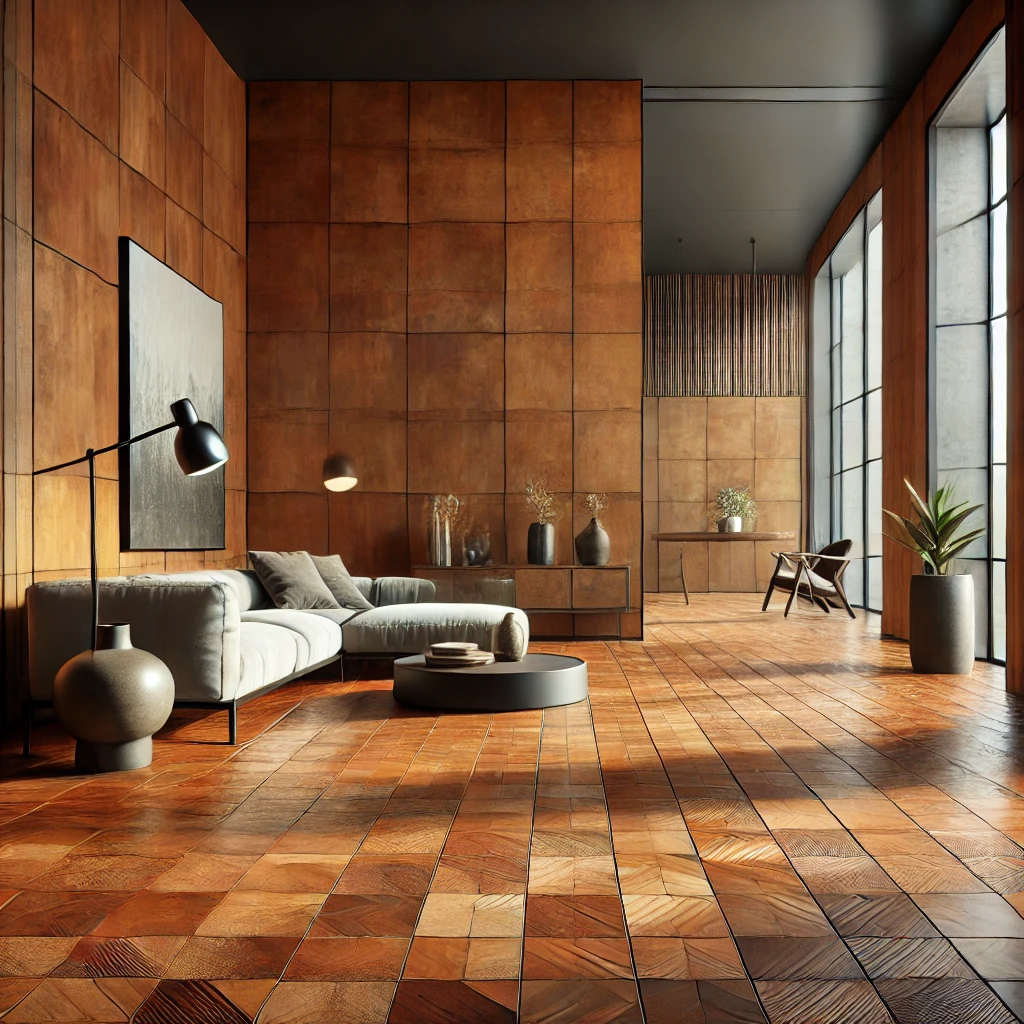
Share Your Experience
How do you feel about terracotta tiles? Have you used them in your home? What challenges did you face during installation? Share your thoughts and tips in the comments section below!
Terracotta Tile and Brick: A Durable Connection
One of the reasons for terracotta’s enduring popularity is its connection to brick—a material synonymous with durability and strength. Terracotta tiles, like bricks, are made from fired clay and share a similar warmth and natural appeal. However, while bricks are typically used for walls, terracotta tiles are a popular choice for flooring due to their aesthetic qualities and the sense of comfort they provide.
In recent years, designers have increasingly used brick or brick-like materials for flooring, particularly in rustic or industrial-style interiors. Brick floors convey a sense of solidity and protection, creating a monolithic feel that many find comforting and secure. However, the weight of actual brick can be prohibitive, especially on floors above the ground level, making terracotta an attractive alternative.
Brick Veneer: A Lightweight Alternative
To solve the issue of excessive weight, brick veneer—essentially a thin slice of brick—has become a popular choice. Brick veneer offers the look of full-sized brick while being much lighter and easier to work with. This makes it possible to achieve the appearance of a brick floor or wall without the structural concerns associated with full brick.
Brick veneer is typically cut using a diamond saw, which allows for precise, clean cuts. This material can be used on floors, walls, and even as a cladding for fireplaces, adding a rustic or industrial feel to any space. The versatility of brick veneer, combined with its reduced weight, makes it a practical and stylish option for homeowners and designers alike.
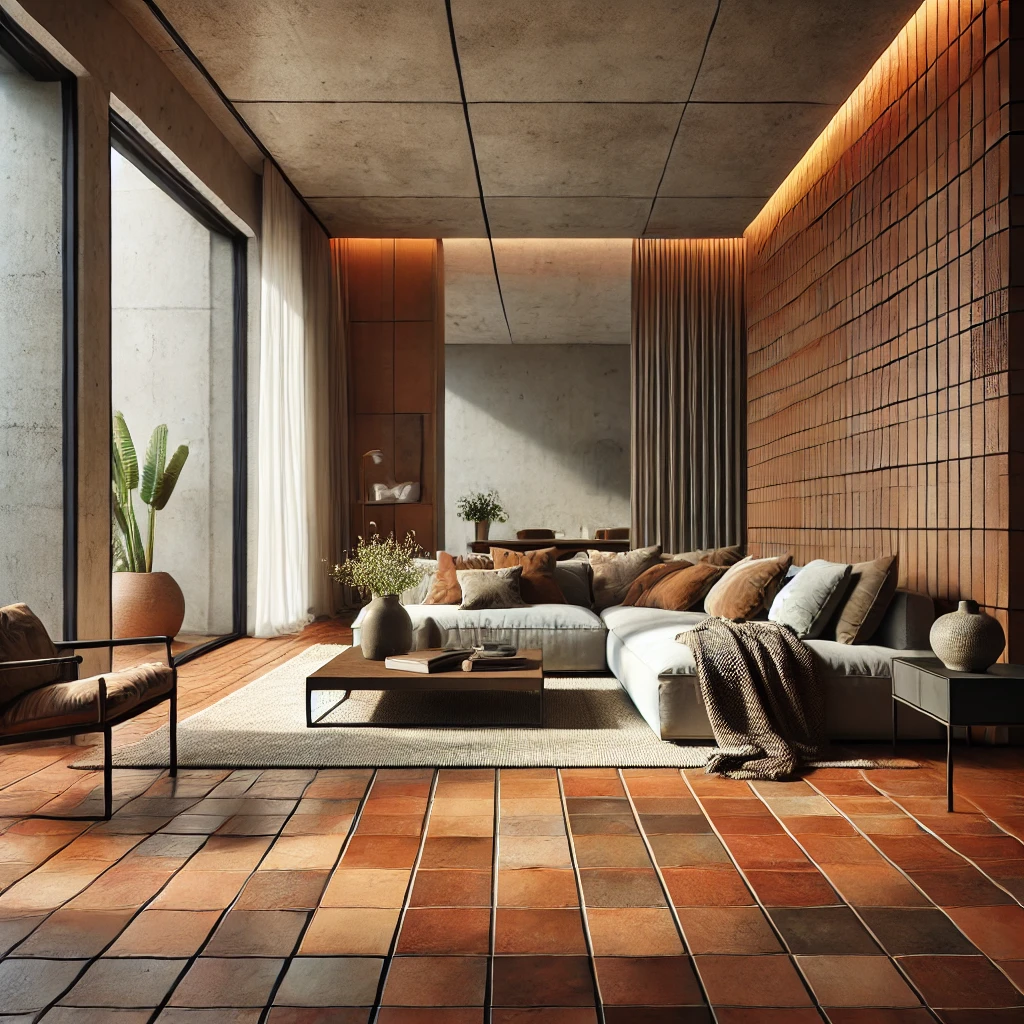
Clinker: A High-Performance Option
Clinker is another type of brick that has been refined to enhance its performance. Traditionally, bricks were fired at temperatures between 950 and 1100 degrees Celsius, but controlling these temperatures was historically challenging. As a result, some bricks were over-fired, becoming denser, harder, and darker. These over-fired bricks, known as clinker, were found to be more durable and resistant to wear and tear.
Modern clinker bricks and tiles are made from high-firing clays and are fired at even higher temperatures—up to 1300 degrees Celsius. This process produces a material that is extremely hard and resistant to damage, making clinker tiles suitable for both walls and floors. Clinker is often used in areas that require extra durability, such as kitchens, entryways, and outdoor spaces.
Although clinker tiles are primarily designed for walls, their durability makes them a viable option for flooring in homes and apartments. However, one limitation is the availability of sizes and shapes, as clinker tiles are not always produced in the traditional brick shape. Despite this, the material’s exceptional qualities make it a worthy consideration for those seeking a long-lasting, high-performance flooring option.
Design Versatility of Terracotta
Terracotta tiles come in various shapes and sizes, allowing for endless design possibilities. While rectangular, square, and hexagonal tiles are the most common, custom shapes and patterns are also available for those looking to create a truly unique space. The natural variations in color and texture inherent in terracotta add depth and character to any design, making it a versatile choice for a wide range of styles, from rustic to contemporary.
In addition to flooring, terracotta can be used for walls, backsplashes, and even as decorative accents in outdoor spaces. Its warm, earthy tones complement a variety of color palettes and materials, making it a timeless addition to any home.
Final Thoughts
Terracotta tiles offer a rich blend of history, durability, and aesthetic appeal. Whether used on floors, walls, or other surfaces, they bring warmth and character to any space. From traditional hand-crafted tiles to modern high-performance clinker, terracotta’s versatility and timeless appeal make it a favorite among designers and homeowners alike.
Join the Conversation
Have you used terracotta or brick tiles in your home? What was your experience like? Share your thoughts, tips, and photos in the comments below. Your insights could help others make the best choices for their projects!
